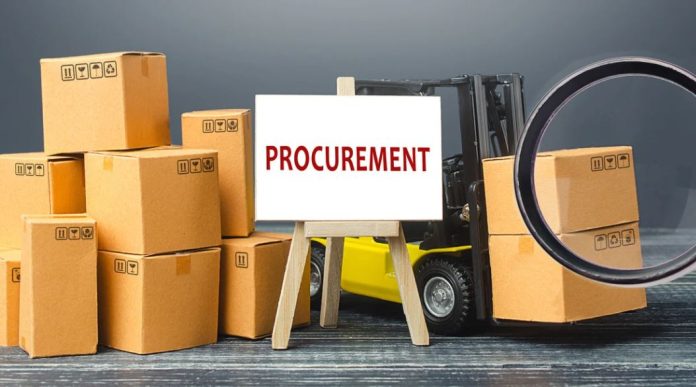Table of Contents
Procurement still runs on outdated systems in many companies. Approvals sit in inboxes, budgets live in spreadsheets, and teams make last-minute purchases just to keep things moving. It all works until it doesn’t.
This guide explains how to transform procurement into a strategic function. You’ll learn where common breakdowns occur, what a transformed intake-to-procure process looks like, and how to start making lasting changes.
What Is Procurement Transformation?

Procurement transformation is a structured shift in how a company manages purchasing. Its goal is to move from fragmented tasks to a unified, efficient process and bring clarity and control to every stage of procurement.
Key elements of procurement transformation include:
- Automating request, approval, and PO workflows
- Centralizing procurement data across departments and business units
- Strengthening supplier collaboration with shared performance metrics
- Using procurement insights to support budgeting, forecasting, and risk planning
If done right, these drastic changes will turn procurement from an administrative function into a strategic advantage.
You gain control over spending, make operations more efficient, and free up time to focus on high-impact work, like sourcing better partners or negotiating smarter contracts.
Where Procurement Breaks Down First?
Most broken procurement processes have a few things in common. Here’s where the problems typically start:
- Approvals get stuck: A team submits a purchase request, but no one knows who owns the final sign-off. Days pass and deadlines slip. The original need becomes urgent or, worse, irrelevant.
- Off-contract spend increases: An employee buys software directly with a company card to avoid the slow process. No one notices until the subscription auto-renews three months later.
- Communication is scattered: Teams use different templates, tools, and contacts for similar purchases. There’s no shared view of what was ordered, approved, or already delivered.
- A one-size-fits-all process for all purchases: Travel, marketing, or IT purchases follow the same rigid workflow, even though they have different timelines, vendors, and risk levels. Forcing all purchases from the same process leads to confusion and delays.
How to Approach Procurement Transformation?

You don’t need a massive reset to begin improving procurement. The most effective transformations start with clear priorities, a phased plan, and tools that solve real problems. Here’s how to approach the shift in a way that sticks:
1. Identify What’s Broken and What’s Working?
Start by mapping out how procurement works today. Where do delays happen? Which steps create confusion or extra admin work? Include feedback from teams outside of procurement, especially finance, operations, and department heads. Their input often reveals bottlenecks that aren’t visible from the inside.
2. Focus on the High-Impact Fixes First
Not every problem needs to be solved at once. Start with the areas that create the most friction or waste:
- Outdated approval chains
- Duplicate vendor contracts
- Manual invoice matching
- Off-contract spending
3. Build a Roadmap That Scales
A good transformation plan is realistic and phased. Set clear goals, define success metrics, and assign ownership. Then roll out changes gradually, starting with one spend category, business unit, or location before scaling across the company.
4. Choose Tools That Fit Your Process
Software should support the way you work, not force you to change everything overnight. Look for platforms that can handle multiple workflows, connect easily with your existing systems, and offer flexibility as your needs evolve.
A good tool will help standardize the procurement flow, track spend in real time, and remove the manual steps holding teams back.
5. Keep People Involved From the Start
Technology alone won’t drive change. Communicate early and often with everyone affected by the new process. Offer training, gather feedback, and be ready to adjust where needed.
Teams are far more likely to adopt new tools and workflows when they understand the why and can see the benefits quickly.
Challenges of Procurement Transformation
Even with a solid plan, procurement transformation can hit roadblocks. Some are obvious, others surface only after the work begins. Here are the most common challenges that stall progress:
1. Misaligned Priorities Across Teams
Procurement might aim for better compliance, while finance pushes for savings, and operations just want speed.
Without alignment, teams pull in different directions. Before rolling out any changes, make sure department leaders agree on what success looks like and how to measure it.
2. Lack of Ownership
Momentum slows when no one is clearly responsible for specific parts of the transformation. Assign clear roles early: who leads the process, who approves decisions, and who keeps everything on track.
3. Resistance to Change
If teams have used the same process for years, any shift can feel like a disruption. Some worry about losing control; others simply don’t see the need. Make the case with real examples. Show how new tools or workflows will make their jobs easier.
4. Underestimating Training Needs
Rolling out software without preparing people leads to poor adoption. Build time for training into your plan. Keep instructions simple, and make support available after go-live. Even the most intuitive platform requires adjustment.
5. Poor Supplier Communication
Suppliers are often left out of the conversation, but changes to approvals, POs, or invoicing affect them directly. Loop them in early. Share what’s changing, how it benefits them, and how they can adapt on their end.
Early Benefits of Procurement Transformation

You don’t need to wait a year to see results from procurement transformation. Some of the biggest gains come early once the right processes and tools are in place.
These early wins not only save time and reduce costs, they also help build trust in the new system and encourage teams to keep moving forward.
- Faster approvals and PO cycles: One of the first things that improves is speed. When approvals move through a clearly defined workflow and everyone knows who’s responsible, POs get issued faster.
- Spend visibility: Once you centralize procurement in a system with real-time reporting, you finally see what’s being purchased, by whom, and against which budget.
- Fewer off-contract purchases: With guided forms and easy access to pre-approved vendors or catalogs, employees no longer need to guess or work around the process.
- Less admin, more strategic work: By automating repetitive steps like 3-way matching and invoice tracking, procurement teams free up valuable time for more meaningful tasks.
Key Insights
Procurement transformation doesn’t have to start with a full overhaul. The most effective changes begin with a clear problem, a simple business plan, and early wins that show it’s working.
Start by fixing what slows your team down, then build from there. The sooner you start, the sooner procurement becomes a strategic asset, not just a checkpoint.


